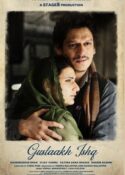 In this installment of the fabulous series, This Day That Year, Subhash K Jha revisits Salman Khan’s Lucky: No Time For Love which released on April 8th, 20 years ago.
In this installment of the fabulous series, This Day That Year, Subhash K Jha revisits Salman Khan’s Lucky: No Time For Love which released on April 8th, 20 years ago.
Love is a ‘grave’ matter for the couple in this film. Much of the romantic interaction between the 40-year-old Salman Khan and the 19-year-old Sneha Ullal takes place in a graveyard in Russia, where they are holed up after riots break out all over the city.
Riot on! Gabriel Garcia Marquez got there first in Love During The Time Of Cholera. Radhika Rao and Vinay Sapru’s sweet but finally unproductive concoction about cradle-snatching -love is a bit of a letdown.
Sure, the films LOOKS good. It even sounds good. With Sudeep Chatterjee’s cinematography creating a sweeping arc over the snowcapped violence of the landscape, the film cannot go wrong visually. But it has no heart. It pretends hard. Oh yes, it tries to be more ‘heart’ than Romeo and Juliet could muster mutually. But finally, it ends up being as inspiring as a Valentine’s Day card bought off a shelf in a posh departmental store.
There’s a skin-deep aesthetic appeal to the presentation, contoured and accentuated by Adnan Sami’s dreamy songs and Monty’s background music to match the ill-matched couple’s match-making manoeuvrings.
But finally, the film is felled by its own wispiness. Efforts to imbue an epic grandeur in the romance(especially towards the end, when sequences of a snow-stormed train taking away truckloads of migrants almost mimic Steven Spielberg’s Schindler’s List) fail because the film lacks a grounded premise.
The plot should have been about a schoolgirl’s crush on a man much older than her. It should’ve been akin to Hrishikesh Mukherjee’s Guddi. It instead goes into echoes of Yash Chopra’s Lamhe, where a girl old enough to be his daughter wooes and finally wins over the middle-aged hero.
With Salman Khan looking 35-plus and the girl seeming heartbreakingly vulnerable and callow, chemistry and biology should be the furthest from the narrative’s mind and heart.
The film chooses to turn the initial crush into a passionate affirmation of the man-woman thing. …The premise of a school girl falling in love with a man old enough to be….well, to be escorting her through a troubled hinterland is exciting. That the man should reciprocate her feelings is a bit hard to digest.
By the time the awkward romance builds up to a passionate crescendo in Lata Mangeshkar and Adnan Sami’s voice, the audience celebrates a love that is denied a decent and acceptable embodiment.
Lucky…is like the Taj Mahal without its inherent nostalgia, pathos, and elegance. The reflection of the moonlit marble gleams back attractively. But it’s a gleam without substance.
Beautifully mounted but vacuous at heart, Lucky…is one of those could-have-been films that stops short in its tracks well before the journey gathers momentum. Milap Jhaveri’s dialogues depend more on Salman Khan’s cocky image than the inherent romantic overtures of a theme.
“If I ate any more, I’d end up like Adnan Aami,” quips Khan. And when in the graveyard, the school girl lisps, “I’m not that type of a girl,” Khan guffaws, “I’ve heard that line before.”
Trouble is, all the lines and emotions associated with Salman Khan’s romantic image are here transposed into a gawky alliance with a girl who doesn’t know any better and a man who should.
While in Bewafaa, the 50-year-old hero finds a pretext to marry the 23-year-old heroine, Lucky seeks no alibis for the misalliance. It lets the man and the woman trudge through snow and fluff until we feel enough is enough. The performances range from the cocky (Khan) to the callow (Ullal).
Mithun Chakraborty’s prolonged efforts to play a cop, charlatan, and masquerader with a penchant for mouthing cinematic clichés fall short of expectations. The rest of the cast is marginalized by their ill-written roles.
Lucky isn’t without its assets. It wears a polished look and its exudes a glittering grandiosity. The epic love duet ‘Shayad yehi to pyar hai’ where the Singing Goddess Lataji sings for the teenage heroine, lends music to the film’s soul.








